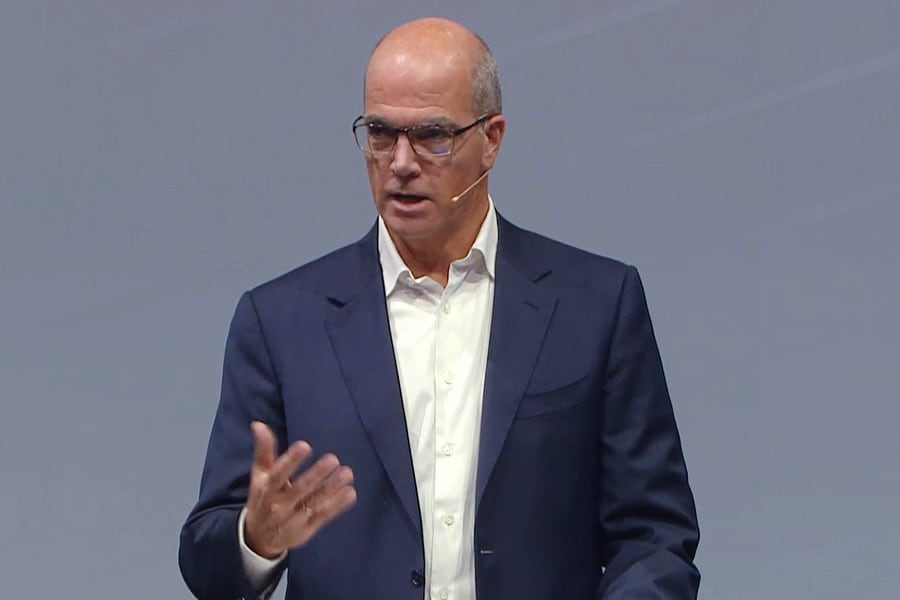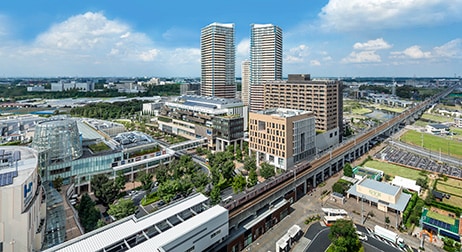Visualizing the Usage of Renewable Energy with a Smartphone
Jan. 22, 2021
Editing Team
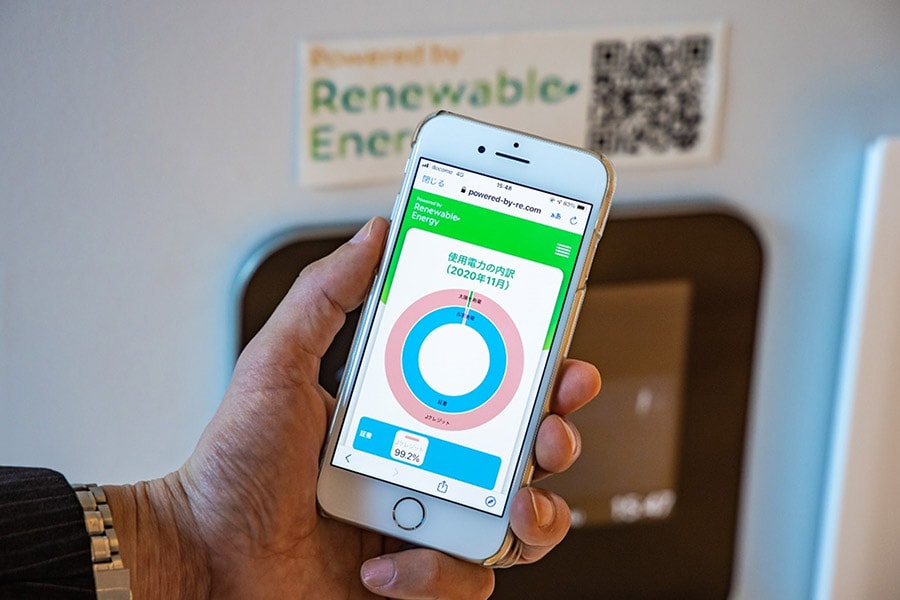
- Table of Contents
-
- Visualization: Key to promoting the widespread use of renewable energy
- Visualizing individually the renewable energy usage of buildings and facilities
- Advancing introduction of the Visualization System at the Hitachi Central Research Laboratory
- "Our goal is to contribute to a decarbonized society through visualization."
n January 22, 2021, Hitachi, Ltd. announced a system that uses digital technology to visualize the usage of renewable energy at various facilities. The announcement also revealed that Hitachi has started the operation of a system for certifying facilities and services that are operated or provided solely by renewable energy as "Powered by Renewable Energy." These systems represent part of an initiative aimed at realizing a decarbonized society. According to Masahiro Aoki, project leader of the Digital Grid Project, the key to promoting the widespread use of renewable energy is creating a mechanism by which "investment for the environment leads to a return." In further elaborating, he says:
"Using this system will enable companies to prove that their facilities and services utilize renewable energy. There are consumers who choose products by such environmentally conscious companies. Products that use renewable energy will gain a competitive advantage over those that don't, and this is potentially profitable. Our aim is to create such a mechanism in the society with this new system."
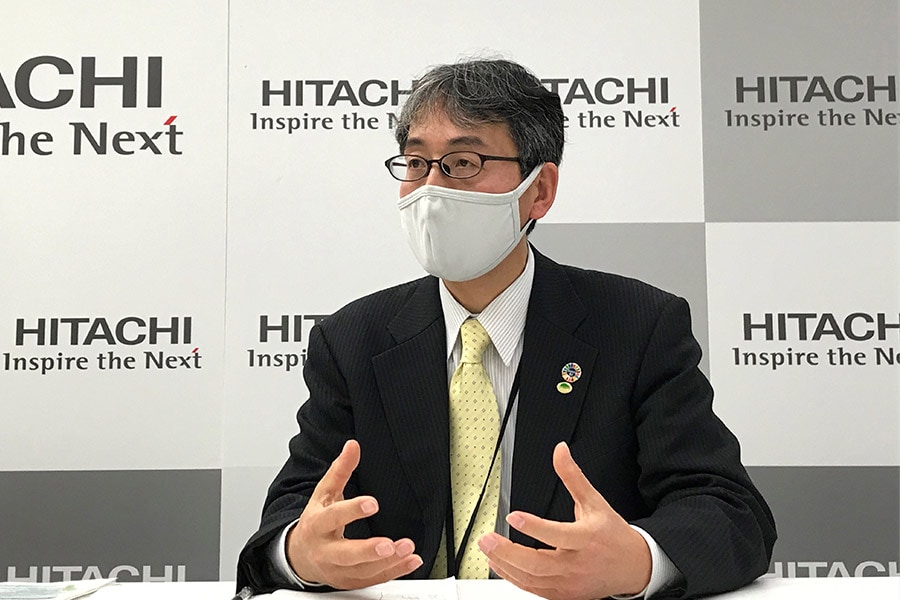
Visualization: Key to promoting the widespread use of renewable energy
Against the backdrop of rapidly progressing climate change, governments, industry, and organizations throughout the world are engaging in various projects for reducing greenhouse gas emissions. The EU and UK have declared their aim of net-zero emissions of greenhouse gases by 2050, while Prime Minister of Japan Yoshihide Suga also expressed Japan's determination to achieve net-zero emissions at a G20 summit.
"Japan, however, is lagging behind in the introduction of the renewable energy, as is essential to achieving net-zero," notes Hiroshi Mine, senior engineer of the Future Investment Division's Digital Grid Project, who oversaw the development of this system.
He added, "When we asked ourselves how to promote the widespread use of renewable energy, we wondered: if we could make people aware of the source of the electricity that they are using—whether it is solar, wind, or hydro—by visualizing it, would that give impetus to renewable energy introduction?"

Visualizing individually the renewable energy usage of buildings and facilities
The system developed in this project by Hitachi combines a smart meter that uses digital technology for measuring electrical power usage and blockchain technology for secure data management. This allows the type and amount of renewable energy being used by buildings and facilities to be visualized individually. Senior engineer Mine explains the features of this system as follows:
"Previously, indices indicating the amount of renewable energy used by a company were typically disclosed as an approximate percentage for an entire factory or other such site. The visualization system that we developed makes it possible for a smartphone to display, for individual elevators and other facilities, whether the electrical power used in operation originates from solar, hydro, wind, or even thermal or nuclear. It also displays percentages for each. For example, the system lets you see that, for a certain elevator, wind is X percent and solar is X percent, or for a certain factory, solar is X percent and thermal is still only some several percent."
Taking sites individually, some exist that might struggle with the early achievement of 100% renewable energy usage. However, Mine expects that the introduction of this system "ought to spur motivation for achieving 100% because you can see the exact renewable energy usage percentages for individual buildings and manufacturing lines."
By leveraging the concrete visualization of energy usage, this system is set to contribute to the enhancement of corporate environmental awareness and to the active use of renewable energy.
Advancing introduction of the Visualization System at the Hitachi Central Research Laboratory
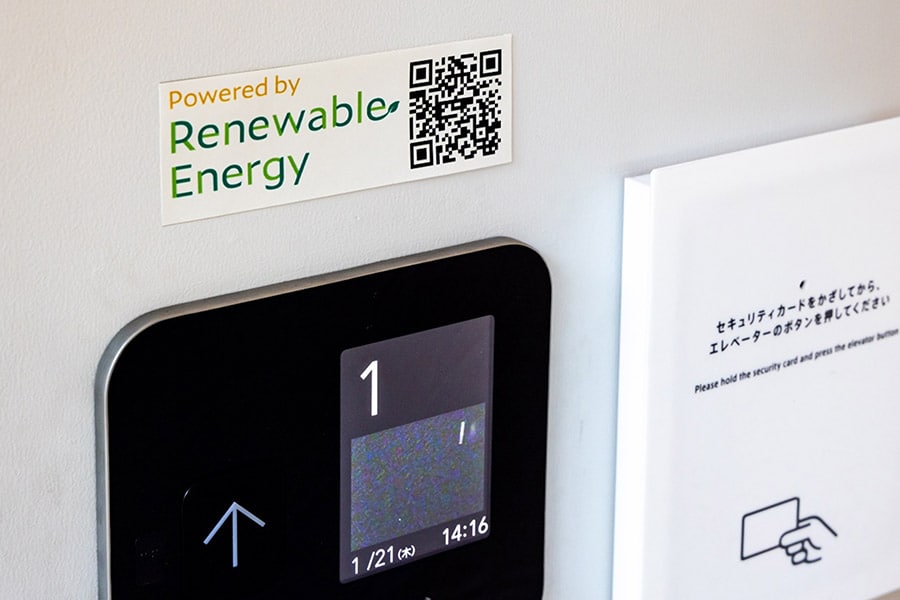
The Hitachi Central Research Laboratory, located in Tokyo's Kokubunji district, has introduced the Visualization System in its four-story tower known as "Kyoso-to" and to elevators and other facilities. Passing a smartphone over a QR code, located next to "Powered by Renewable Energy" on a plaque by an elevator, immediately shows the status of electrical power used by the elevator on the screen.
The categories of electrical power used—including private power generation, non-renewable energy, (environment) certification, and purchased energy—are shown as a graph, and the usage percentages for solar, wind, and other sources are displayed. The non-renewable energy percentage is also displayed, showing at a glance the status of renewable energy introduction.
It is also necessary to ensure that the displayed renewable energy is in fact sourced from solar, wind, hydro, and others and that their percentages are not falsified. In this respect, Mine points out that, "The use of blockchain technology makes it possible to prove with certainty that the source is solar or wind, in other words, where and how much of what type of renewable energy is being used."
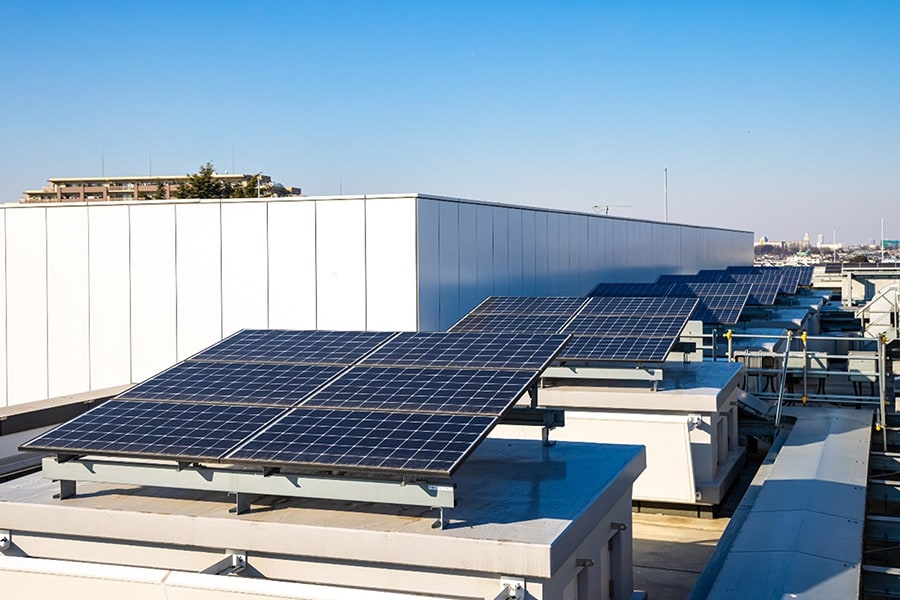
"Our goal is to contribute to a decarbonized society through visualization."
One obstacle to the widespread use of the system is installing new smart meters. A smart meter can be installed on each light, but since a new installation usually costs several hundreds of dollars, it is necessary to efficiently install them in strategic locations. Project leader Masahiro Aoki explains a point important to installation:
"Large factories already have systems for monitoring electrical power by production line. As installing new smart meters is costly, gaining widespread system use depends on the key point of linking up with existing facilities to the maximum extent. Because most factory production lines are connected to the internet, installation cost can be reduced by rewriting software and building a system that allows data distributed unevenly in the factory to be retrieved from the cloud.
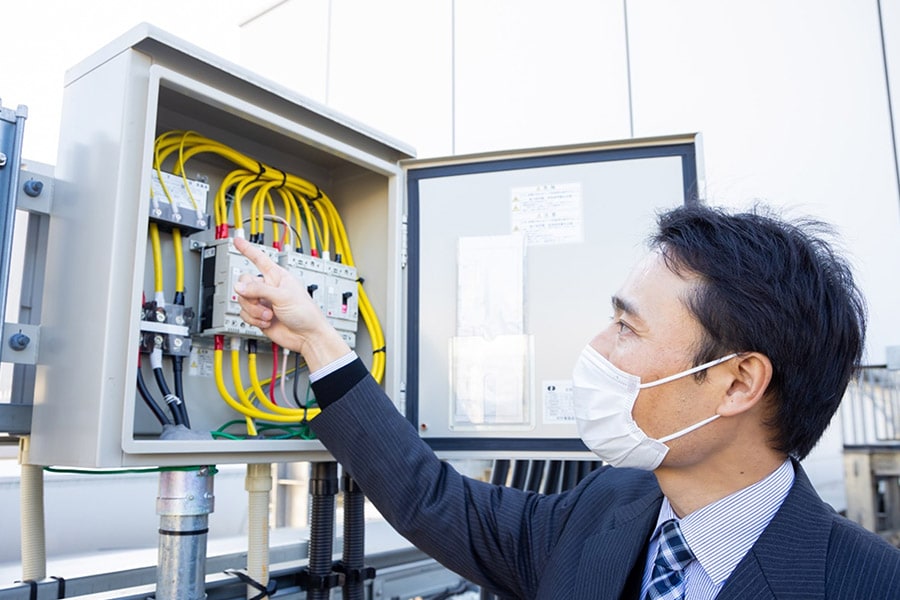
Official operation of the system at the Hitachi Central Research Center's Kyoso-to has begun on February 1, 2021. With deployment to external customers planned from April, considerations of price will go forward while prioritizing the achievement of widespread use. Mine explains as follows:
"First, we intend to deploy our sales activities toward supply chains, including the manufacturing industry. Because it would be a considerable challenge to introduce the system to an entire factory all at once, we would like for our customers to start out with just some of their manufacturing lines or maybe a single floor, and then to gradually expand on it from there."
As for the "Powered by Renewable Energy" program, which officially certifies the use of renewable energy, Aoki says, "We are currently pursuing a process for approval by a third-party organization. Approval by a trusted public organization will enhance credibility."
Regarding future prospects, both Aoki and Mine expressed their hopes, saying, "Eventually, we would like to not only offer this system in Japan, but also to expand it to overseas."
"While Europe and North America are ahead in the introduction of renewable energy, it will remain as a challenge for Japan, India, China, and many other Asian countries. By deploying our system as a solution, we hope to see decarbonized societies increase throughout the world."

